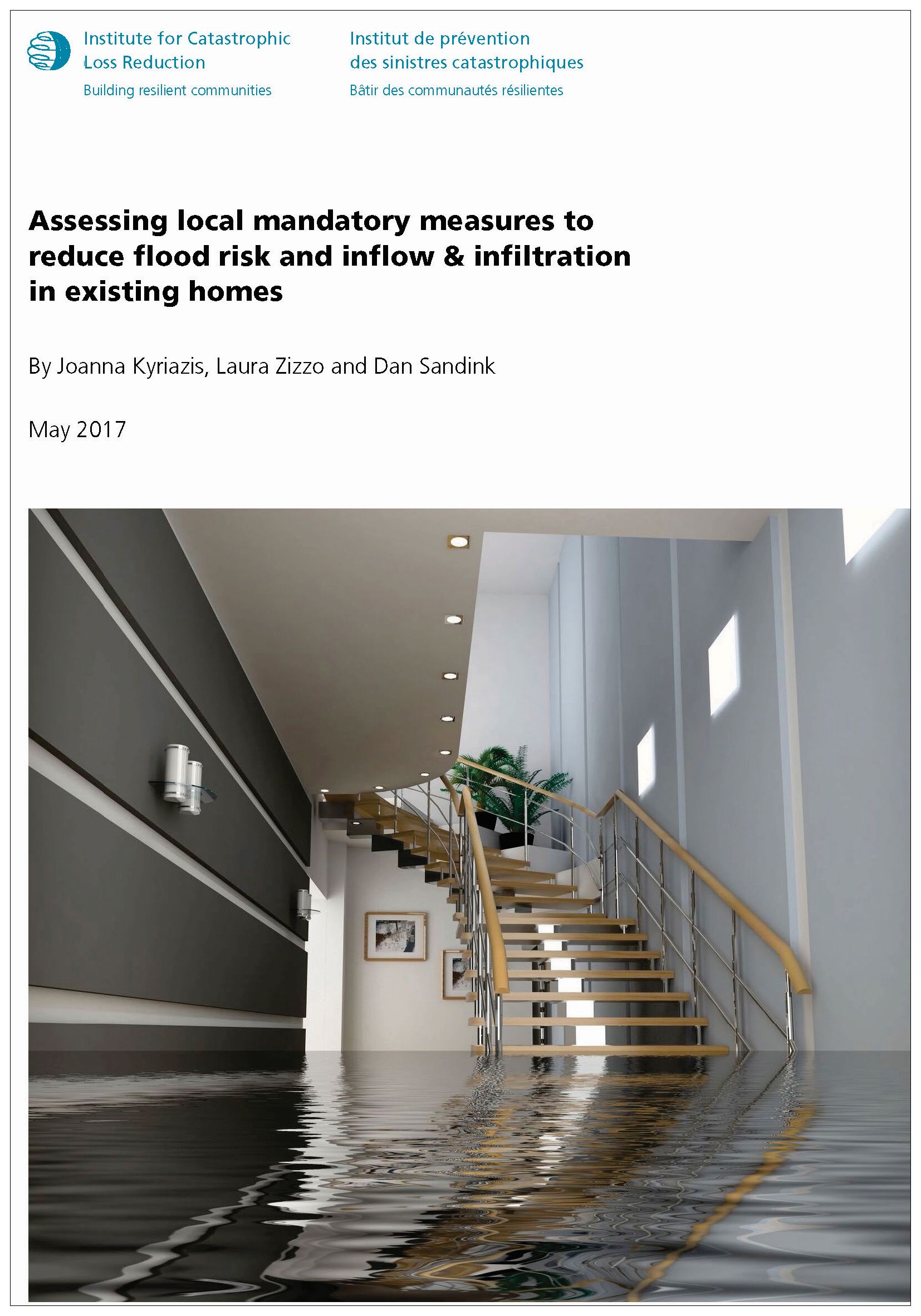NEW REPORT: Insurance industry highlights need to mandate private-side flood risk reduction measures
Note to Reader:
In May 2017, the Institute for Catastrophic Loss Reduction (ICLR) released a report on the issue of mandating flood risk reduction measures on the part of private property owners in Canada.
Titled Assessing local mandatory measures to reduce flood risk and inflow & infiltration in existing homes, the report focuses on enforcement-based approaches adopted by North American municipalities, including the City of Victoria and Metro Vancouver in British Columbia.
The report points to the statutory provision, by-law language or other form of legal authority the showcased municipalities are relying on to go forward with their measures.

Figure 1 illustrates private-side I&I and flood vulnerability issues experienced in many Canadian homes and subdivisions. These vulnerabilities include poor lot grading, uncapped backfill areas, poor downspout discharge practice, lack of sewer backflow protection, degraded sewer laterals, among other vulnerabilities.
Both public-side and lot-level (private-side) measures are important for effective mitigation of urban flood risk
“Basement flooding is one of the most substantial drivers of natural disaster losses in Canada,” states Dan Sandink, Director of Research, ICLR.
 “During wet weather, basement flooding associated with sewer backup is often related to high rates of rainwater inflow and infiltration (I&I) in municipal wastewater systems. Sources on private property – for example, foundation drain connections, leaky sewer connections, downspout connection – often contribute significantly to I&I issues in municipal systems.
“During wet weather, basement flooding associated with sewer backup is often related to high rates of rainwater inflow and infiltration (I&I) in municipal wastewater systems. Sources on private property – for example, foundation drain connections, leaky sewer connections, downspout connection – often contribute significantly to I&I issues in municipal systems.
“Municipalities often struggle to engage homeowners in I&I and basement flood mitigation programs, even when comprehensive education and subsidy programs are in place. Legal tools provide one more ‘tool in the toolbox’ to help municipalities deal with this pressing issue.
While many B.C. municipalities have not dealt with severe basement flooding events, I&I is an issue in municipalities across Canada. Topics explored in the paper are relevant for both municipalities interested in applying private-side measures for basement flood mitigation and I&I reduction.”
What are the Responsibilities of Property Owners to Protect Against Flood Risk?
“Our report explores legal tools that could be used to require private property owners in existing developments to better manage excessive rainwater and protect against flood risk. We examine the legal implications of applying these tools in the Canadian municipal context.,” continues Dan Sandink.
“Typically when you have a basement flood event or you have a city that is prone to a lot of basement flooding, you may find that a lot of the risk originates from the private property side of the property line.
“In the report, we discuss, among other things, mandatory measures to disconnect improper connections to sanitary systems, including downspouts and foundation drains. We also discuss requirements for private property owners to properly maintain private sewer laterals and fix defects in those laterals.”
Municipal Education and Subsidy Programs are not Working
“The typical initial approach on the part of municipalities is education in order to inform homeowners about the risk of basement flooding. Some municipalities also provide subsidies to homeowners to fix problems such as disconnecting foundation drains and downspouts from the sanitary systems,” explains Dan Sandink.
“What we have found, working with municipalities, was that despite the generosity of these programs, and in many cases very aggressive education and subsidy programs – still, very large proportions of at risk homeowners do not engage in these programs.”
Solutions are Complex and Expensive
“Connection of foundation drainage to sanitary systems presents a particular challenge….as expensive and potentially technically complex retrofits in the form of foundation drain disconnection and sump system installation are often required. This cost and complexity serves to reduce the likelihood that homeowners will engage in this often critical approach to private-side [inflow and infiltration] reduction.”
“With the disconnections of foundation drains and downspouts, you are dealing with buried components of your sewer infrastructure.“Stuff is literally under the floor slab and you have to dig up your floor to disconnect these things but they are an important part of the overall protection of homes from basement flooding, so important in fact that it is worthwhile pursuing legal measures to disconnect these critical sources of excess water in sewer systems,” concludes Dan Sandink.
To Learn More:
Download Assessing local mandatory measures to reduce flood risk and inflow & infiltration in existing homes, released in May 2017.


